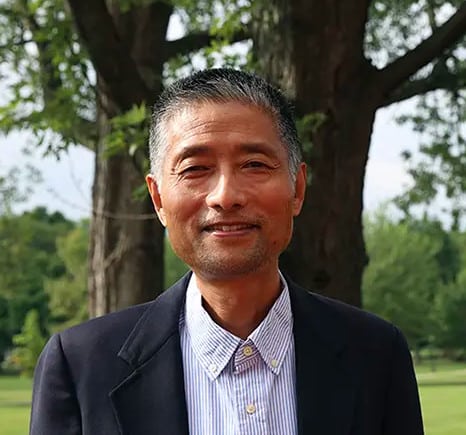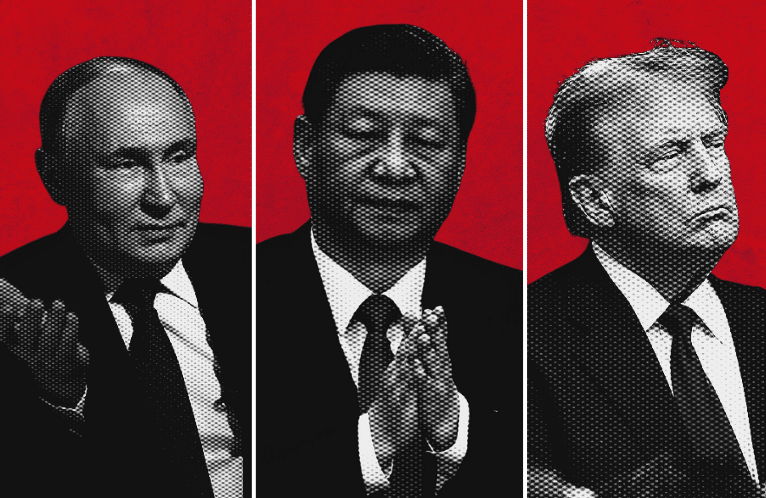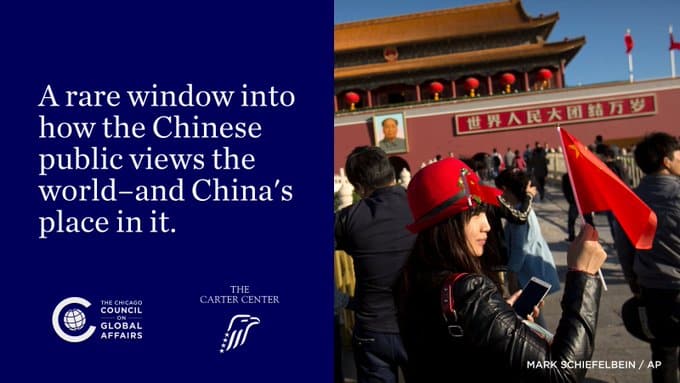Interview with Zhou Wenxing: Cross-Taiwan Strait Relations in the Next Few Years—Is War Inevitable?
The Untested Path of U.S.-China Rivalry Under Trump 2.0
- Analysis
 Jinghao Zhou
Jinghao Zhou- 11/18/2024
- 0

The highly anticipated U.S. election has concluded. The bipartisan consensus on strategic competition with China is expected to take on a new configuration, with fresh tactics and maneuvers under the Trump Administration 2.0, although China reiterated its commitment to working with the United States on the principle of “win-win cooperation.” Will China be the “biggest loser” under the Trump administration? The conventional view is that a more experienced and decisive Trump could place China, already at a disadvantage, in an even tougher position. However, the competition between the two nations in the new era of Trump 2.0 has not been contested. Both the United States and China have vulnerabilities, and the future of great power competition will depend on the wisdom and courage of leaders from the two countries in navigating the complexities of global politics.
The United States Faces Setbacks While China Loses Its Leverages
The Chinese economy is in deep trouble, with real estate investments plummeting, local debts soaring, manufacturing bankruptcies increasing, and consumer confidence low. Official statistics even indicate potential Japan-style deflation and high youth unemployment. China’s central bank has introduced the most aggressive economic stimulus since the global pandemic to revitalize the economy. The National People’s Congress has approved the 10 trillion yuan ($1.4 trillion) stimulus package to reduce China’s debts and prepare for the Trump administration 2.0.
The outcome of the stimulus package remains uncertain as the downturn of the Chinese economy is a structural issue. If the stimulus does not produce positive results before Trump takes office, China may struggle to negotiate a trade deal from a strong position. Accordingly, China could find it difficult to provide sufficient financial support for a large-scale preparation to fulfill Xi’s ambitions for national unification with Taiwan.
As an export-oriented economy, China would face intensified challenges if Trump were to raise tariffs, which would strain an already weakened Chinese economy. Trump plans a 10–20% universal tariff on U.S. imports and a 60% tariff specifically on Chinese goods. He could use multiple legal avenues, like Section 232 and the International Emergency Economic Powers Act, to support his actions. Higher tariffs on Chinese goods would raise export costs, weaken competitiveness, reduce export growth, and increase unemployment.
China failed to fully implement the first phase of the trade deal with the United States during Trump’s first term. Drawing from his first-term experience, Trump will verify both China’s words and actions when negotiating a new deal with China this time. However, Trump’s tariff policies are a double-edged sword. These tariffs would likely face legal challenges, increase U.S. consumer costs, and damage the American economy.
Economists suggest that his tariffs could reduce U.S. GDP by 0.64% and China’s by 0.68%, with significant negative effects on manufacturing. Paul Krugman warned that Trump’s policies could lead to “economic chaos” and undermine U.S. social programs. Twenty-three Nobel Prize economists have described Harris’s economic plan as “far superior” to Trump’s, but this means little after the Republicans’ election victories. Even Trump’s strong ally Elon Musk has acknowledged that the United States will have to face “hardship” under the Trump administration.
China will lose leverage in U.S.-China climate cooperation as well. Trump’s consistent dismissal of climate change, including his previous statement that it was a “hoax,” and his withdrawal from the Paris Agreement during his first term reflected a prioritization of short-term economic interests over long-term sustainability. Trump has promised that he will eliminate all of Biden’s incentives for promoting the electric vehicle market and reverse the fuel efficiency standards set during the Biden administration. To improve the American economy and ease inflation, Trump would likely exit the Paris Agreement again, focus on domestic fossil fuel production, impede U.S.-China climate cooperation, and restrict shared climate initiatives, potentially weakening China’s global negotiating power and impacting its electric vehicle industry.
Trump has announced former Congressman Lee Zeldin as the nominee for Environmental Protection Agency Administrator. Zeldin voted against Biden’s climate change law, opposed New York’s goal to ban gasoline-powered cars by 2035, and supported environmental bills only 14% of the time. The future of U.S. policy on climate change can be foreseen.
Trump’s policies could have cascading effects domestically and globally, worsening the climate crisis, triggering geopolitical tensions over dwindling resources, and hindering sustainable progress. Domestically, extreme weather events could lead to higher economic costs, infrastructure damage, and health issues, including diseases related to high temperatures, which could indirectly affect Trump’s ability to govern. If these issues sparked strong backlash in Washington, he could face significant pressure to return to the negotiating table with China.
China’s “Century Change” Plan vs. Trump’s Plan to End the Wars
To fulfill the “China Dream,” Xi Jinping has promoted a global century-change plan as part of its preparations for unification with Taiwan. China’s commitment to an “unlimited friendship” with Russia and support for the Palestinian movement are part of the plan. However, China’s current reactive stance in the two wars highlights another vulnerability in the broader international landscape.
North Korea, after signing the Comprehensive Strategic Partnership Treaty with Russia, sent 12,000 troops into the Ukraine war, marking the first time an Asian country has intervened in a European conflict since Genghis Khan’s invasion in the thirteenth century. North Korea has declared its readiness for a nuclear test. Russia and Iran are set to sign a similar comprehensive strategic partnership, aiming to strengthen military ties amidst ongoing tensions in Ukraine and the Middle East and potentially intervene in Ukraine.
Not long ago, Putin proposed changes to Russia’s nuclear doctrine, stating that attacks from non-nuclear states supported by nuclear powers could be viewed as joint aggression, and expressed the readiness to launch nuclear tests including strategic missile exercises. Iran has pledged to fight Israel, urged Arab states to sever ties with Israel in defense of the Palestinian people against injustice, and threatened to advance its nuclear weapons program.
All these sudden escalations of tensions are not coincidental; they are undoubtedly an attempt to gain more favorable negotiating leverage in strategic positioning before Trump takes office. The Biden administration actively pursued peace initiatives between Ukraine and Russia while pledging substantial military aid, but the efforts for a peace deal faltered due to Ukraine’s uncompromising demands and Russia’s territorial ambitions. In the Middle East, it worked toward ceasefire agreements between Hamas and Israel but struggled to manage regional tensions, which ultimately led to an escalation of violence.
During his campaign, Trump claimed he could swiftly end the Russia-Ukraine war. After being elected, he promised that he would end the war in Ukraine on his “Day One” agenda. Meanwhile, Trump plans to reinstate his “maximum pressure” strategy against Iran, aimed at curbing the country’s nuclear ambitions, limiting its influence in the Middle East, and ending the Iran-backed proxy wars in the region by crippling Iran’s oil industry and limiting Iranian oil transactions. His goal is to diplomatically isolate Iran, weaken its economy, reduce its support for regional violence, and ultimately force Iran back to the negotiating table under the pressure of economic hardship.
Strategically, it’s not a good time for Ukraine to stop fighting for its territory occupied by Russia as Zelensky wants to follow a “peace through strength” approach in global affairs. This suggests that Ukraine may continue fighting, even without U.S. support, prioritizing its sovereignty over a potentially unsustainable ceasefire. However, there are positive signs indicating that Russia and Ukraine may return to the negotiating table.
Putin has expressed that he is ready for dialogue. Zelensky stated that he had a productive phone conversation with Trump after the U.S. election. If Trump can end both the Iran-backed war against Israel and the war between Ukraine and Russia as he plans, the United States will be able to concentrate all its efforts on China by directly countering China’s strategy of using the Middle Eastern and Ukrainian conflicts to keep the United States in check.
While some argue that China’s ties with Russia result from U.S. tensions pushing it in that direction, it’s essential to recognize that China benefits from these conflicts by diverting U.S. attention and resources. This strategic advantage is why China has established an ‘unlimited partnership’ with Russia. In the Middle East, the U.S. is already heavily engaged in pursuing its interests, which inadvertently keeps it in check. Therefore, resolving these conflicts would allow the U.S. to concentrate more effectively on countering China’s global strategy.
As a result, China will find itself in a disadvantageous position in the Middle East and Europe, and Xi Jinping’s strategy for a “century of change” might unravel. Consequently, China’s mission for unification with Taiwan will be disrupted. Furthermore, Putin stated at the BRICS Summit that Russia won’t abandon the U.S. dollar and that the West is not Russia’s enemy following Trump’s victory, suggesting that the possibility of future cooperation between the United States and Russia is still open. If Trump pursues a U.S.-Russia alliance against China within a Cold War 2.0 framework, it will present a nightmare scenario for China.
U.S. Internal Issues Both Empower and Hinder Trump
Though dealing with Trump might be unpredictable and more challenging, U.S. foreign policy is not solely determined by the President; it is shaped in consultation with the National Security Council, the State Department, and intelligence agencies. Trump’s choice of national security advisor, secretary of state, and other cabinet members could have a substantial impact on China.
During Trump’s first term, his lack of established connections in Washington led to chaos and inefficiency. Since the election, Trump has formally nominated Susie Wiles as White House Chief of Staff, John Ratcliffe as CIA Director, Mike Huckabee as Ambassador to Israel, Elise Stefanik as U.N. Ambassador, Mike Waltz as National Security Adviser, and Pete Hegseth as Defense Secretary, with Marco Rubio as Secretary of State. All these appointees are MAGA-aligned hawks, and some are sanctioned by China; Rubio, in particular, has been sanctioned twice. Regardless of whether the Senate approves these appointments, they have already sent a strong shockwave to China and signaled the direction of Trump’s future China policy.
Republicans have already won control of the Senate, though the outcome in the House remains uncertain. If Republicans gain control of both the House and Senate, Trump will have greater power to increase pressure on China. After Mitch McConnell stepped aside in January, a stronger leader is expected to take his place in the Senate. This potential change might alter strategic calculations for Beijing, impacting trade relations and broader geopolitical dynamics.
Under the Trump administration, the United States can revoke China’s most-favored-nation trade status, but this could result in higher tariffs on all Chinese exports, leading to increased unemployment, worsening inflation, and hindered economic growth. However, the United States would also experience setbacks by potentially reducing GDP by $1.6 trillion over five years and leading to 744,000 job losses, while triggering retaliatory measures from China, jeopardizing the multilateral trading system established by the World Trade Organization.
Some U.S. internal structural weaknesses could also conflict with Trump’s goals. Over the past 40 years, China’s rise has significantly benefited from foreign investment and advanced technology. Without foreign capital and technology, China’s role as the “world’s factory” would diminish. Trump’s administration may mobilize all possible tools to attract U.S. capital back home which will severely shake China’s status as the world’s factory. Nonetheless, the United States will face enormous challenges in achieving the goal.
U.S. labor costs are significantly higher than those in China, Vietnam, and other Asian countries, making domestic production more expensive. Additionally, heavy regulatory burdens cost U.S. manufacturers approximately $350 billion annually, creating a challenging environment for business growth within the country. The United States also faces a shortage of skilled labor, making it difficult for American companies to meet production demands. Compounding these issues, aging infrastructure in the United States hampers modern manufacturing needs, impacting logistics and supply chain efficiency. The complexities of global supply chains add another layer of difficulty. Many U.S. companies have optimized their supply chains in China, achieving efficiency and cost savings by relying heavily on international suppliers.
It is worth noting that it is necessary to make the distinction between onshoring and friend shoring to avoid misrepresenting the true goal of building international partnerships while emphasizing “America First” or “Made in America.” According to William Reinsch, the U.S. should continue to work with reliable allies like Finland and Canada, where industries already thrive. Relying on comparative advantage would be more cost-effective and strategically beneficial, rather than reverting to outdated manufacturing models.
In this context, if China downplayed the threats posed by the newly revised espionage law, streamlined visa procedures, and eased restrictions on foreign travel and residency, it would stand a better chance than other Asian countries and the United States of attracting foreign capital and preventing its outflow or relocation to the United States.
China and India have reached an agreement on Himalayan border patrols, easing long-standing tensions. Chinese and Vietnamese leaders have exchanged visits frequently, signing ten agreements in various areas that bolster trust and cooperation between the two nations. In May 2024, Premier Li Qiang met Japanese Prime Minister Fumio Kishida in Seoul. China hopes to reach a consensus with Japan’s new prime minister, Shigeru Ishiba, to advance Sino-Japanese relations. This progress has diluted U.S. influence over India, Vietnam, and Japan, fostering a relatively stable regional environment for China to counter the Trump administration 2.0.
National cohesion is a vital form of soft power in U.S.-China competition. Despite leadership flaws in both countries, China’s centralized structure allows it to mobilize resources for foreign relations more effectively. In contrast, the Trump administration could deepen rifts within the already fragile international alliances, including NATO, giving China opportunities to exploit these divisions.
In addition, there is doubt about whether the United States can truly heal after Trump called for unity. Political polarization can significantly weaken America’s ability to present a unified front on the global stage and potentially slow down the implementation of the bipartisan consensus on China. Historically adept at using united front tactics, China still can rally pro-China figures in U.S. political, business, and media circles to promote China’s narrative effectively. Trump is somewhat outmatched in taking on the Chinese Communist Party, an experienced player.
During his first term, Trump didn’t have enough China experts in his inner circle. Some former China policy advisers were courageous but took an overly academic approach. The strategy of separating the Chinese Communist Party from the Chinese people proved unworkable, and if this approach continues, it is bound to fail. Seasoned Republican politicians with proven governance skills, like Florida Governor Ron DeSantis and former U.N. Ambassador Nikki Haley, are likely to be sidelined in a Trump administration. Without sufficient talent, Trump’s China policy risks being all talk with limited impact, potentially missing the mark entirely.
Conclusion
When Xi Jinping congratulated Trump on his victory, he urged both nations to find the “right way to get along.” Although China has a tough road ahead, during this transition period, it still has time to foster a favorable international environment, engage with U.S. stakeholders, and enhance domestic economic resilience by restructuring its economy and boosting consumer confidence. If Trump fails to learn from his first term, does not optimize his leadership style, improve ties with allies and Congress, and mend relations with domestic opponents in civil society, business, and media, his ambition of making America great again through the competition with China could very well end up as nothing more than an illusion. Nonetheless, he still has a chance of successfully competing with China over which nation—the United States or China—will lead global governance in the twenty-first century. Trump faces no pressure for re-election, and the younger generation, including figures like JD Vance, will likely continue Trump’s policies in the post-Trump era, ensuring that pressure on China will persist for years to come.
Dr. Jinghao Zhou is an associate professor of Asian studies at Hobart and William Smith Colleges in New York. His research focuses on contemporary China, and U.S.- China relations. He has published six books and six dozen articles. His latest book is Great Power Competition as the New Normal of China-U.S. Relations (2023).
The views expressed in this article represent those of the author(s) and not those of The Carter Center.







